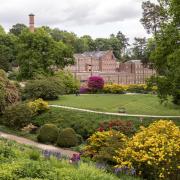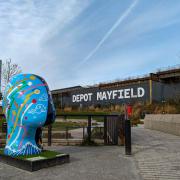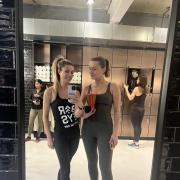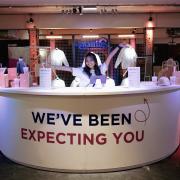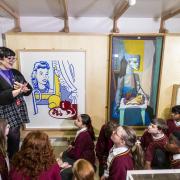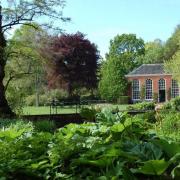IF I told you there’s a precious, classic musical instrument, made by one of the greatest craftsmen the world has ever known, unique in the British Isles, and lying silent (for the most part) in the centre of Warrington, would you believe me?

But every part of that sentence is true. The instrument is not a Stradivarius violin – it’s much bigger and even more thrilling to hear. It’s a huge pipe organ made by Aristide Cavaillé-Coll, over 140 years old and still, in the sound it makes, just as he left it.

Cavaillé-Coll was the greatest organ-builder of his day – some would say of all time. Albert Schweitzer (an organist as well as scholar, theologian and medical missionary), wrote: ‘Until the day that Paris, like Babylon, will be a heap of rubble, those who are susceptible to the magic beauty of his work will think of this man with deep emotion …’
Examples of his work in Europe are today revered by their owners, lovingly maintained, played by the most brilliant performers and recorded. In Britain, there is only one Cavaillé-Coll organ unaltered from its original sound. And it’s a quality concert organ, capable of doing justice to a vast range of music. It’s in the Parr Hall in Warrington.
Other Cavaillé-Coll organs once survived in Britain. Manchester town hall originally had one – but it’s been irretrievably altered. The same is true of Farnborough Abbey, Blackburn Cathedral and Paisley Abbey. The Albert Hall’s example in Sheffield was burnt to a cinder in 1937.
But Warrington’s possession, since 1926, remains. And the town, whether by accident or design, has avoided wholesale ‘modernising’ of its precious asset.
At various times it has fallen silent, but Warrington’s sleeping princess still has her faithful friends. A Cavaillé-Coll Organ Supporters Group has campaigned since 1982 for it to be cared for and heard in all its splendour, and Culture Warrington, the charitable body running the Parr Hall, the neighbouring Pyramid arts centre and Warrington Museum and Art Gallery, has recently roused the lady from her slumbers again. A recital in March by Ian Tracey, organist titulaire of Liverpool Cathedral and organist of St George’s Hall, Liverpool, pulled in a large audience.
Organ builder and conservator David Wells (his firm’s Cathedral Works is in Kirkdale, Liverpool) has tuned and prepared the organ for use for many years, and Roger Fisher, Emeritus Organist at Chester Cathedral, is tireless in promoting it. Roger demonstrated for me its unique tonal make-up, the layout of the console and control devices for the player: all quite different from the standard English style and an important element in understanding how the great French composers meant their music to be heard. Today’s organ students should really experience this gem of an instrument.
Roger Fisher says: ‘When I first played it, I realised it had a wonderful sound – unlike anything else in this country. It needs to be heard in a good acoustic, and those who are interested purely in conservation need to bear in mind the need for it to be practically playable.’
David Wells, who also cares for the organs of Liverpool Cathedral, St George’s Hall, Manchester’s Whitworth Hall and many other historic instruments, explained how the unique aspects of Cavaillé-Coll’s methods. He says: ‘I’ve dealt with this instrument all my working life, and I think we have a fantastic rarity here.’
Leading lights among the Supporters’ Group are Ted Tilling and Jose Rigby: voluntary work played a big part in the success of this year’s well-attended recital. Their passion is to see the organ heard and enjoyed by generations in the future.
But there is a big question mark over the future of the Parr Hall princess. Lynda Fothergill, Warrington borough council’s communications manager, says: ‘The council sees the organ as an historical asset. It decided in 2008 to explore the possibility of finding it a new home, and any decision about its long-term future would come to the council.’
Interest in acquiring it has come from ‘various parts of the globe’, says Culture Warrington’s managing director, Jan Souness, and the charity has also looked at alternative venues in the town. ‘Keeping it in the Parr Hall is not actually the best future for the organ, or to enable everyone to enjoy it,’ she adds, and you can hardly disagree, as the hall is used today for entertainment ranging from the Stone Roses’ reunion to stand-up comedy – a lighting rig obscures the ornate organ case, and modern heating systems can be fatal to organ mechanisms.
An approach by Sheffield Cathedral is still ongoing: the issue, as always, is money. Full restoration would probably cost over £1 million; moving even more. But Culture Warrington has a good record of obtaining cash from the Arts Council, the Heritage Lottery Fund and elsewhere for other projects in the town, including £3/4 million recently for the Museum.
And, as Jose Rigby says: ‘There’s a dodo in that museum. We don’t want this organ to be a dodo.’
A recital on the Parr Hall Hall organ is to be given by Michael Wynne and Benjamin Chewter on 22 October, 7.30pm. Tickets £5/£4.50. Michael Wynne is the Director of Music at St. Mary’s Church, Warrington, and Benjamin Chewter is the Assistant Director of Music at Chester Cathedral.
FACTBOX
The Parr Hall organ was made by Aristide Cavaillé-Coll in 1870.
Cavaillé-Coll’s organs in France inspired the works of Charles-Marie Widor, César Franck, Alexandre Guilmant, Louis Vierne, and, later, Marcel Dupré and Olivier Messiaen.
Originally a private installation, made for wealthy Victorian music publisher John Turner Hopwood, the organ was first built in Skipton and later moved again.
Warrington acquired the organ in 1926 and it was re-erected in the town’s major auditorium, the Parr Hall (built 1895).
A partial refurbishment of the mechanism around 1970 gave it a new lease of life, but today the organ is not in full working order.






